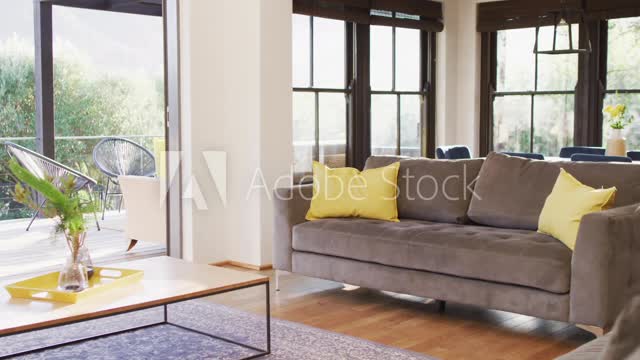Premium Only Content

Comparing the performance of transparent solar windows to traditional windows
http://gestyy.com/edWvKC
The results of the study by the Wells Fargo Foundation and the NREL initiative showed that PV-coated windows can appreciably lower the solar heat gain coefficient.
JULY 21, 2022 ANNE FISCHER
The results of the study by the Wells Fargo Foundation and NREL initiative showed that PV-coated windows can appreciably lower the solar heat gain coefficient.
JULY 21, 2022 ANNE FISCHER
NEXT Energy Technology executives demonstrate PV-coated windows.
Image: NEXT Energy Technology
From PV magazine the USA
In the IN2 NEXT project, PV-coated windows from NEXT Energy Technologies were tested against traditional commercial windows, tracking performance based on their respective solar heat gain coefficient (SHGC), an industry-standard performance metric for commercial windows. The results show that NEXT Energy’s technology could lower the SHGC from an otherwise equal window to below .20.
NEXT Energy is a Calif.-based company that is developing transparent energy harvesting window technology. The goal is to enable glass facades to be turned into producers of low-cost, on-site, renewable energy for buildings. NEXT Energy participated in a multi-year photovoltaic window project as part of the Wells Fargo Innovation Incubator (IN2), which measured the overall energy-efficiency performance of NEXT Energy transparent PV windows compared to traditional commercial windows.
Commercial buildings account for 36% of all US electricity consumption at a cost of more than $190 billion annually. Additionally, windows represent 30% of a commercial building’s heating and cooling energy, costing US building owners about $50 billion annually, according to DOE. Considering the potential savings, in addition to energy generation, lowering the SHGC to .20 is significant. SHGC measures the amount of heat, or solar gain, created by sunlight passively entering buildings through windows. Excessive solar gain can lead to overheating within a space and inefficient energy management throughout a building.
“These are extremely significant results for the energy efficiency of insulating glass. Achieving an SHGC below .20 while providing neutral aesthetics has been a monumental challenge for all of us that create vacuum deposition architectural coated glass. Balancing performance and appearance is the heart of ideal harmony and it appears NEXT has done just that,” said Garret Henson, vice president sales and marketing at Viracon, a manufacturer of architectural glass for commercial buildings in North America.
In making NEXT Energy’s windows, the PV technology is enabled by proprietary organic semiconducting materials that are earth-abundant and low-cost, the company reports. This material is coated uniformly onto the glass as an ink in a high-speed, low-cost, low-energy process, enabling the glass to harvest the sun’s light and convert it into electricity rather than heat.
“The results of the collaboration with NEXT give us data on how to redefine ways architects and building owners measure the performance of commercial windows,” said Trish Cozart, program manager of IN2 and director of the Innovation and Entrepreneurship Center at NREL. “If you can generate substantial amounts of electricity with a building’s windows, it can mark a new chapter. Now, the goal is the evaluation of SHGC to account for impacts of power generation as well as solar heat gain.”
This content is protected by copyright and may not be reused. If you want to cooperate with us and would like to reuse some of our content, please contact editors@pv-magazine.com.
About Us https://bit.ly/3GUPFOa
Contact: +919942258153 kvk.subadhra@gmail.com
Thank You Very Much for Sharing YourValuable Thoughts
https://b4b97j03xf19qxa3qkqlu3igr1.hop.clickbank.net
-
 1:46:47
1:46:47
Game On!
17 hours ago $5.41 earnedExpert Super Bowl LIX Picks, Preview, and Best Bets!
44.9K6 -
 36:50
36:50
Mrgunsngear
19 hours ago $10.33 earnedPresident Trump's Executive Order To The ATF: This Could Be Huge!
34.4K39 -
 25:48
25:48
Adam Does Movies
21 hours ago $1.34 earnedTop 10 Reasons Why Emilia Pérez Is Complete TRASH!
19.9K7 -
 26:56
26:56
MYLUNCHBREAK CHANNEL PAGE
1 day agoUnder The Necropolis - Pt 6
175K46 -
 6:03
6:03
Tactical Advisor
1 day agoEverything New From Panzer Arms 2025
6.8K -
 1:15:59
1:15:59
CarlCrusher
19 hours agoUFOs & Paranormal Phenomena are Not Imaginary | Dr Jim Segala MUPAS Phase 2
6.5K1 -
 12:44
12:44
BlackDiamondGunsandGear
14 hours agoRadian Ramjet & Afterburner / Worth it? / Which Shoots Flatter?
23.2K4 -
 49:10
49:10
CharLee Simons Presents Do Not Talk
10 days agoDO NOT TALK with GIL MAZA & SAM ANTHONY (Mass Deportation Results)
13K -
 8:07
8:07
Tundra Tactical
20 hours ago $4.20 earnedHiPoint Embraces The MEME Yet Again.
48.1K6 -
 36:00
36:00
hickok45
7 hours agoSunday Shoot-a-Round # 267
7.68K11